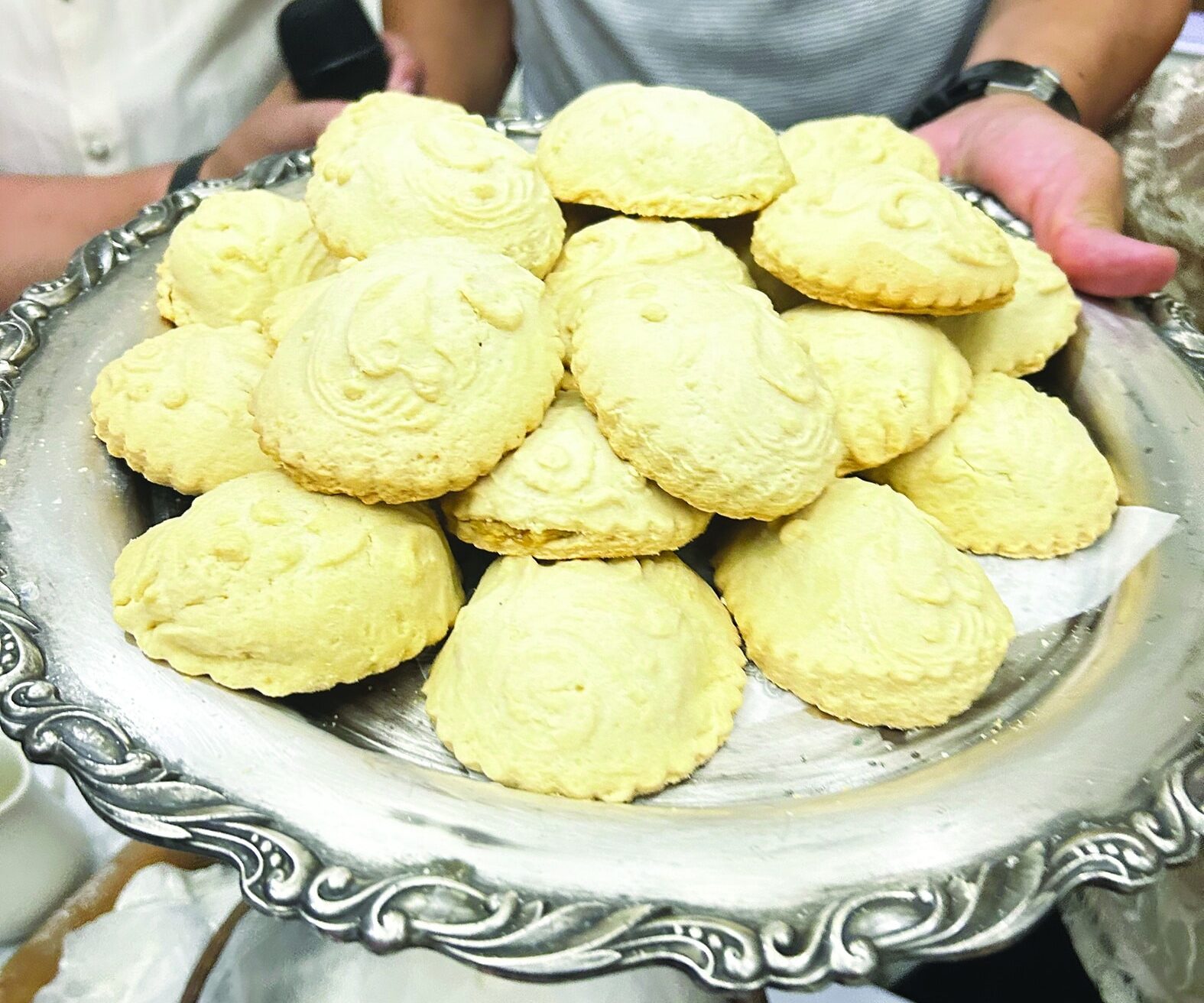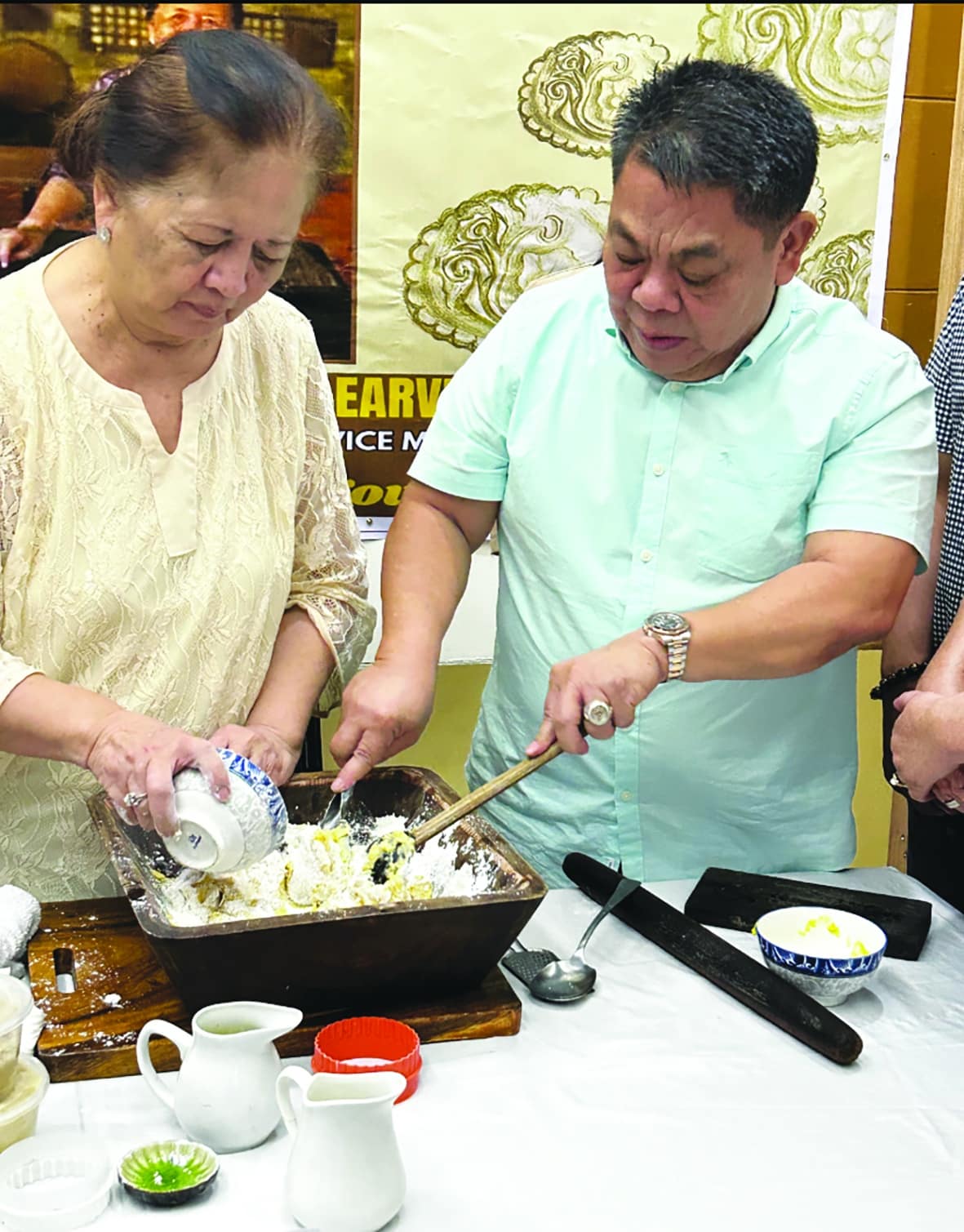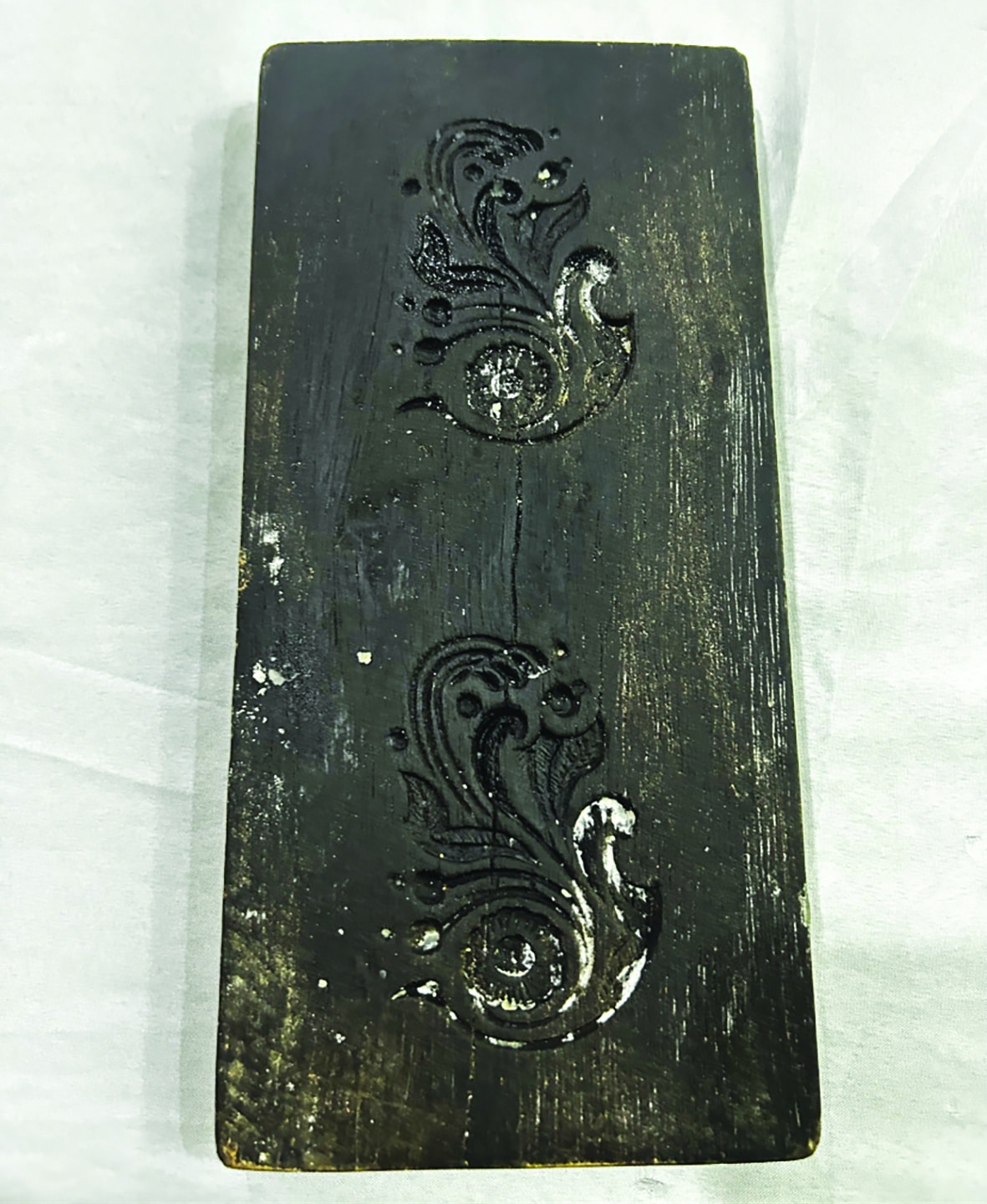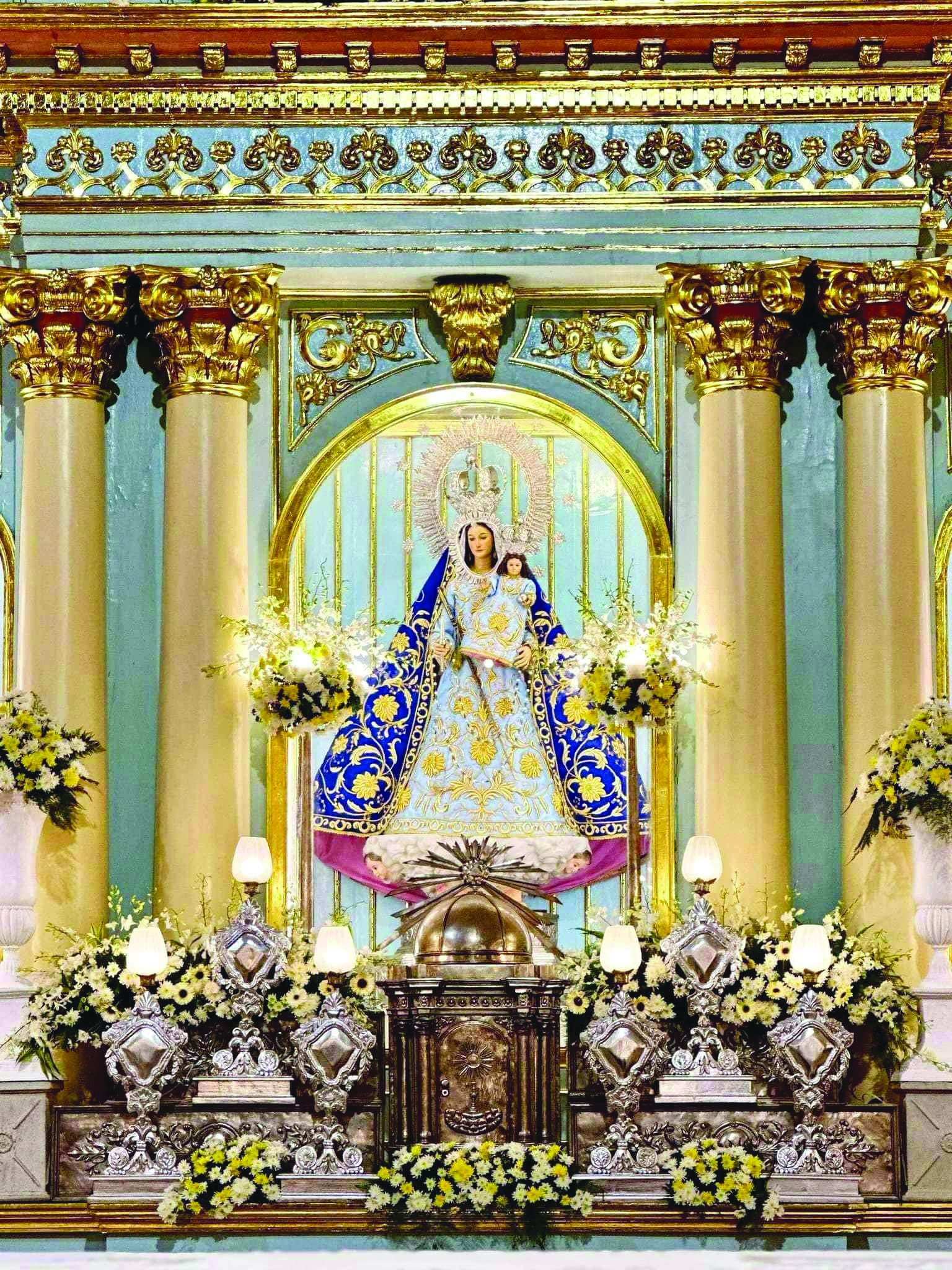Lost to Pinatubo blast, Bacolor’s heritage cookie is back

HOLY OFFERING “Dulce Prenda,” a pastry offered by poor devotees to the Virgin Mary, is reintroduced in Bacolor town in Pampanga as it celebrates the feast of naval victories against the Dutch in the 1700s. —Photos by Tonette T. Orejas
BACOLOR, PAMPANGA, Philippines —Something was lost as townsfolk in this former Philippine capital struggled to survive and rebuild from the world’s second worst volcanic eruption of the 20th century.
Other than lives, homes, farms and other properties, what also vanished in the aftermath of Mt. Pinatubo’s June 15, 1991 eruption and series of lahar flows until 1997 was an old kind of pastry.
It stayed in memory, and older residents call it “Dulce Prenda.” An Australian food channel translated it to “sweet treasure.”
This cookie is linked to the devotion to Nuestra Señora del Santisimo Rosario (Our Lady of the Most Holy Rosary)-La Naval de Bacolor that is recorded to have begun here in 1786. Bacolor celebrates in November—after Manila and Angeles City in October—the intercession of the Blessed Virgin Mary in naval victories against the Dutch in 1646. Bacolor, as capital of Pampanga between 1762 and 1764, hosted the Spanish army fighting the British invaders.
Voltaire San Pedro, Bacolor tourism officer, has no definitive answers for why the pastry is not prepared or sold in bulk or in a handful anymore.
Article continues after this advertisementHe surmised that the diaspora of 81 percent of 67,228 Bacolor residents in 1991, the relocation to eight resettlements or the extreme poverty and landlessness that ensued following the disaster might have caused the seeming disconnect with the tradition of offering Dulce Prenda during the La Naval.
Article continues after this advertisementPintakasi, a website of “Chronicles of Philippine Popular Piety and Local Ecclesiastical History,” confirmed the pastry’s existence and demise.
“The cookies were very popular during the festivities, yet it abruptly ended [when] Pinatubo exploded years ago. It made the people of Bacolor migrate to different locations, tearing the tradition apart,” according to Pintakasi.
Starting in 1997, more residents occasionally returned to the “ghost town” during the feasts of La Naval, Our Lady of Lourdes and patron saints of villages, as well as on All Souls’ Day and Election Day.
But the pastry remained just a memory, he said.

KEEPER OF CULINARY TRADITION Culinary heritage and chef Lillian Borromeo shows Bacolor Mayor Eduardo “Diman” Datu howthe pastry “Dulce Prenda” is made. She used grated and sweetened coconut filling instead of the traditional “kundol” (winter melon).
Revival
But Dulce Prenda has been “reintroduced” as “Bacolor’s hidden heirloom dish” earlier this week, ahead of the La Naval today.
Mayor Eduardo “Diman” Datu and the Don Honorio Ventura State University requested chef and culinary heritage advocate Lillian Borromeo, 84, to teach students and local bakers how the cookies are made.
In an interview, Borromeo said she pulled a notebook of old recipes from her files. It belonged to her grand aunt Maura Hizon (sister of Tomasa, wife of her grandfather Don Monico Mercado) who recorded the ingredients and preparations.
“The wealthy people offered valuable gifts to the Virgin [Mary]. But those without also wanted to offer something, but they had nothing to offer,” she recalled from stories of cooks in the Mercado clan of Sasmuan town where the devotion spread.
The locals, according to her, made the Panecillos de San Nicolas out of a mix of egg yolks, butter, milk, sugar, arrowroot flour, baking powder and the rind of “dayap” (a local citrus).
“They also added a winter melon (“kundol”) sweet filling that is used in “hopia” pastry, which the Chinese taught them. After fusing both traditions into this biscuit, they did not know what to call it,” Borromeo shared.
She added: “When the Marian procession came through the town with the devotees singing the Spanish song ‘La despedida a la Virgen’ (Farewell to the Virgin), they heard the lyrics ‘Adios, dulce prenda adorada.’ They did not understand what it meant but decided ‘dulce prenda’ would be the name of this sweet cookie.”
Because the winter melon is not available during the rainy season, Borromeo replaced it with grated and sweetened coconut filling during her cooking demonstration.
Her narrative is part of the documentation of the pastry’s history, San Pedro said. In the nearby Pampanga capital of San Fernando, she is also popularizing the “panara,” a pastry with unripe papaya.

A wooden pastry mold, newly made in nearby Betis, Guagua, which is scuplted with the embroidery of the Virgin Mary’s gown.
The pattern on the Dulce Prenda was inspired by the embroidery on the dress of the La Naval image. Before baking, the dough is pressed on a wooden mold. It was made in the woodcarving community of Betis, which is only a river apart from Bacolor.
“The biscuit is not difficult to make,” said Vice Mayor Ron Earvin Dungca as Datu mixed the ingredients.
Borromeo said she last made the pastry at the request of Erli Mendoza for the launch of her book “A Cofradia of Two (Oral History on the Family Life and Lay Religiosity of Juan D. Nepomuceno and Teresa G. Nepomuceno)” in 2004.
Liza Granda, maker of the best-selling “sansrival” cake here, planned to add the Dulce Prenda to her products.

The original image (“venerada”) of the Nuestra Señora del Santisimo Rosario-La Naval Bacolor is kept at the “retablo” (niches) before the main altar of the San Guillermo Church. —Bacolor Tourism Office
Original image
The venerada, or the image enshrined at the “retablo mayor” before the altar, is the original and stays inside the half-buried San Guillermo Church, according to Msgr. Eugene Reyes, head of the church heritage committee of the Archdiocese of San Fernando.
The original “festejada” or processional image for fiestas and its “carroza” (carriage), commissioned by couple Jose and Luz Panlilio, can be seen in the museum of the De La Salle University-Dasmariñas campus in Cavite. San Pedro said local leaders have appealed for its return.
In its absence, the La Naval procession resumed in November 1995 using the image owned by the late Tom Joven.
Pintakasi said the devotion “continues to thrive up to this day,” adding that the patroness became a “witness to the glorious, tragic and resilient history of Bacolor and its people.”